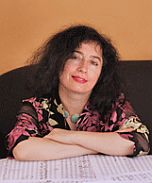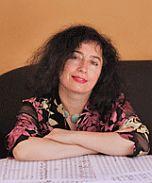Charles Amirkhanian, artistic director, Other Minds Festival: "How important is it for you to write something that’s never been heard before?" Keeril Makan, assistant professor of music, MIT: "Nothing’s been heard before."To this reviewer, however,
Noise Revisited
Static had the cymbal upside down on top of a snare drum. By bowing its edge or using sticks to strike or drag on it, percussionist David Shively caused a more obvious variety of sound than the previous contrivance. The Del Sol String Quartet was there to accompany, and its scrapes and shrieking glissandos made sure that sleep was not possible. Like composers in the experimental branches of 1960s modernism, Makan was venturing into, as he put it, “the nebulous and fertile territory between pitch and noise.” Static began with distant-sounding dive bombs and moved on through several sections, one of which brought to me an image of someone desperately banging on a screen door to stop dozens of mewing cats from fighting inside. You can hear it for yourself at the composer's Web site. Eventually, more cheerful, hillbilly-jam sounds in the strings give way to concluding quasi-tonal utterances.

Photo by Robin Holland
After intermission came Dan Becker’s piece for prepared Disklavier, Revolution. The Disklavier, as you may know, is the modern-day player piano, in which a computer does the playing rather than a punched roll. For Revolution, Becker had the good judgment to add a human performer, as well, allowing for interplay between the unseen electronic commands and the more visibly purposeful actions of pianist Kathleen Supové.
Wake-up Call
The final work on the program was Morton Subotnick’s The Other Piano, for piano (Supové) and supervised electronics (the “other” piano, played by Subotnick). Since I was thinking of the story of Rip Van Winkle, I couldn’t help but remember Subotnick’s response to another preconcert question.Amirkhanian: "Are you doing something new for you [in this piece]?" Subotnick: "It has a melody."For all his 40 years of fame as a pioneer in electronic music and multimedia experimentation, it is fascinating that Subotnick has finally “woken up” to melody. As he put it, “I hadn’t discovered for myself what the message of music was.” In the event, The Other Piano did not have a memorable tune. What it had instead was an engram, a basis for a tune, starting with three notes, a descending minor third and major second, which was elaborated in a consistently engaging manner. The computer-generated aftersounds from the piano came from speakers situated around the hall so that they could overlap and “float around the auditorium” in an “improvised space painting.” Most arresting was the third of the four movements, “Alone,” which began with trills that morphed into what sounded like a swarm of flies and, later, bees. Despite the new music label, the Other Minds concert pivoted on an old question: How long can a piece last before it outstays its welcome? Makan’s explorations went way over the limit. Becker’s 17-minute revolution seemed, even so, about five minutes too long, and stands to gain a lot with some judicious editing. Kats-Chernin’s brevity was just right, making me anxious to hear her pieces again, old-fashioned as they were. But for Subotnick, a master of transition and inherent interest of material, the 37-minute work that made the concert end near 11 p.m. was more than welcome. It was heavenly.

